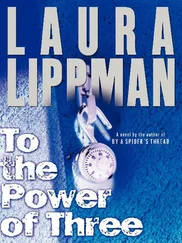In the parking lot, she notices that Doris Halloran is still sitting in her car, hands gripping the wheel, yet she hasn’t turned on the engine. Poor thing. Although she looks at least ten years older than Tally, she is actually younger, younger even than Tally’s real age, about which she is always a little vague.
“S o you started your family young, too,” Doris Halloran said to Tally in this very market, when the Robisons were finally settled in Dickeyville. Settled, but not exactly accepted. Hard feelings lingered about Clement Robison’s dream house, the way he got around the village’s strict rules on historic preservation. He argued that his house, the farthest house down Wetheredsville Road, lying beyond the mill, technically wasn’t part of Dickeyville after all.
“Too?”
“I was married at twenty, but there were two miscarriages before Tim. He’s fourteen now.”
That made Doris, what? Thirty-five, thirty-six? Tally wondered if it was the gray light in the little market that made Doris look so gray. If Tally had been forced to guess-thank God she hadn’t guessed-she would have put the other woman’s age at forty-five, a very hard and unforgiving forty-five.
“Oh, I’m older than I look,” Tally said. Adding swiftly, lest she seem vain, which she was, but why advertise it: “It’s the way I wear my hair that makes me look younger.”
Doris nodded. “We’ve noticed.”
T o this day, Tally wonders about that “we.” Doris and her husband? The royal we? All the women of Dickeyville, sitting in silent judgment on the newcomer, with her long corn-silk hair and pretty, impractical clothes, living in the modern monstrosity that no one wanted? The mid-1970s was the era of The Stepford Wives, and if the women of Dickeyville were not the empty-eyed automatons of the book and film, they were not as individualistic as they wanted to believe. They were merely a hipper variation of Stepford wives. Eating granola and living in a historic district didn’t make you a freethinker.
Of course, Doris Halloran was and is a different kettle of fish from the other Dickeyville wives. She still wears housedresses and panty hose. Her pale red hair, on those rare occasions when it is released from its curlers, is worn in tight, unflattering waves. Yet she is younger than Tally. How can that be? Doris Halloran looks as if she has been old all her life. Had the miscarriages done that? Tally yearns to feel superior to her. Why shouldn’t she? She is pretty, vibrant, smart. She paints, and not in a dilettante way. Who is Doris Halloran to be talking about Tally’s hairstyle, to be judging Gwen for breaking up with Sean? Tally may claim to be older than she is, but she could shave five, ten years off her real age and be believed.
Tally has been lying about her age since she and Clem left Boston two years into their marriage. She lies about Clem’s age, too. Not outright lies, but evasive bits of gentle misdirection, fudging and nudging, nudging and fudging. She nudges her husband’s age down, ever so slightly, her own up, thereby narrowing the gap between them, which she finds embarrassing, although not as embarrassing as the fact that she married at eighteen and had her first child at nineteen. It isn’t the math that tortures her, but the other facts that can be inferred from these bits of arithmetic. Tally Duchamp Robison did not graduate from college, maybe didn’t even attend. Among her people-and Tally comes from people who are the sort of people who think of themselves as having people-this was unfathomable, shaming. Her great-great-grandmother had gone to college, her grandmother was a lawyer, her mother is an ob-gyn. OK, maybe she was brought up to bring home the bacon after all, but Betty Friedan be damned, the only rebellion available to Tally was an early, conventional marriage to an older man. It felt exciting and daring at the time. Now, in 1979, no one gets that. To the world at large, she is no different from the Doris Hallorans, marrying at twenty because there were no other options. Tally had all the options in the world when she was eighteen.
And she threw them all away because she was headstrong and shortsighted-and didn’t know where to go for a pregnancy test without being found out, and didn’t want to wait too long, lest others figure out her predicament.
I want to go to Paris, she thinks, waiting to turn left at the always busy intersection near the store, still overwhelmed by traffic from the Social Security Administration at this time of day. It’s taking the line of cars two, three cycles to get through the light. I want to be the person I’ve been pretending to be all these years.
Tally was never foolish enough to claim to have a degree, but she drops her selected facts like bread crumbs and lets people follow them where they seem to lead. She was accepted at Wellesley. True. She married young. Again, true. Her husband was a college professor-oh no, not at her college-her uncle’s best friend, from the medical school. A bit of a scandale , if one must know. Still true, and is it her fault if people think she was seduced while a college freshman? People eye Clement differently after they hear these bits. With more respect, because a thirty-two-year-old man who had an affair with an eighteen-year-old was not necessarily out of line, especially if he married her in the end. Tally still remembers the gleam of who’d a thunk it in the eyes of their new acquaintances. Clem benefits as much as she does from this misunderstanding. Dear as he is, he is a bit of a fuddy-duddy. At a recent faculty party, someone produced a joint and Clem not only declined to try it, he also insisted they leave immediately. Geriatric specialist? Clem is a geriatric specialty.
But such instances of disharmony are rare. Tally is an old soul, in her opinion, older than Clem in many ways. When Gwen, their surprise baby, was born, Clem was already forty, Tally not even twenty-eight, yet it was Clem who got down on the rug with her and played without inhibition. Tally didn’t have it in her. She felt ancient. She adores Gwen, who has turned out to be a most satisfactory child. But having Gwen-finally, an accident, not that she regrets it-meant postponing her next stage. What if she had started painting in her twenties? Where would she be now?
She is-what is her real age?-forty-two years old, pretending to be forty-six-ish. Clem is fifty-six, although she says early fifties when pressed. Gwen will leave for college in four years. Now throw in another four years. College-age children expect their homes to stand as shrines, as Tally learned from Miller and Fee. She will be forty-six, and Clem will be sixty, married almost thirty years. He probably won’t want to take early retirement, but he’ll be ready to leave teaching at sixty-five, once Gwen is out of college, she’s sure of it. Then they can go to Paris. Somehow, some way. She will go to Paris before she’s fifty-two.
You’ll be dead at fifty-two.
The thought runs an icy finger down her spine. This is not at all like her. She is not morbid. She is not given to dark premonitions. She blames the shiver on the black cat in the window of the dry cleaners, the one holding up its paw in salute to the glories of Black Cat rubber heels. Mired here in the line of traffic waiting to turn left, she has been absentmindedly staring at the cat, whose face has a decidedly sinister cast. “Shoo,” she says as she accelerates, her turn for the green light finally arriving. Shoo . Doris Halloran is still sitting in her car, back at the market. Tally assumes Doris is too exhausted to go home, that the interior of her car is the only place she can be alone. It’s different for Tally. She has her studio, she has a vocation, she has-well, it’s different for her, it just is.
Читать дальше
Конец ознакомительного отрывка
Купить книгу












